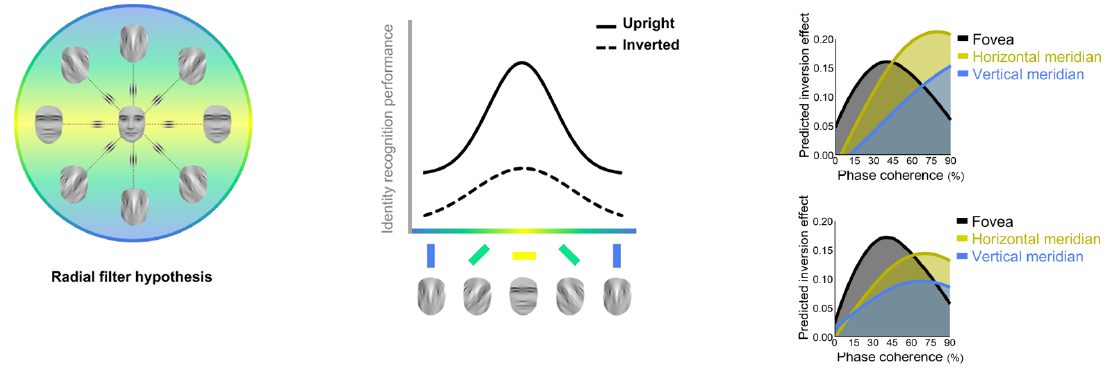Active Periphery/Center Integration
In ecological situations such as when we search for a friend in a crowded place, we actively explore our environment by encoding the scene layout with our low-resolution peripheral vision, then by making a saccadic eye movement to bring the high-resolution fovea onto the faces for more precise visual processing to extract finer-grained identity cues.
We have just started this new research line to investigate the fundamental notion that our visual experience results from an active interplay between peripheral and foveal processing where the (face) stimulus is
(1) processed in the periphery presaccadically before
(2) a saccade brings it to the fovea for
(3) refined (i.e., postsaccadic) processing.

Human vision in the periphery is most accurate for stimuli that point towards the fovea. Despite evidence that the human visual system is radially biased, it is not yet known whether this bias persists at higher levels of processing, or whether high-level representations are invariant to this low-level orientation bias. We show that face selective mechanisms are more sensitive on the horizontal meridian (to the left and right of fixation) compared to the vertical meridian (above and below fixation), suggesting that the horizontal cues in the face are better extracted on the horizontal meridian, where they align with the radial bias.
Stay tuned!
